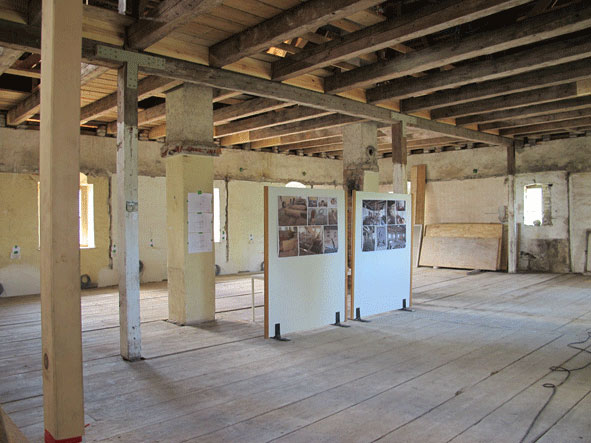Renovation and preservation
Since 2010, Fraunhofer IBP has been cooperating with the Fraunhofer Center for Conservation and Energy Performance of Historic Buildings located in Benediktbeuern Abbey. The aim of the center is to develop new methods and techniques for renovating historical buildings, but also to showcase existing technologies and demonstrate their effectiveness.
In June 2012, a research project funded by the German Federal Ministry of Economics and Technology was launched to investigate reversible interior insulation for old buildings and historical monuments. Researchers from the departments of Indoor Climate, Hygrothermics and Life Cycle Engineering are working together in Benediktbeuern using an interdisciplinary approach, under the leadership of the working group “Preservation of Historic Monuments and Preventive Conservation”.
The research project focuses both on innovative interior insulation solutions for existing buildings and the further development of products for preserving historical monuments. Reversibility is one of the primary considerations the researchers take into account. Interior surfaces in historical buildings have often accrued multiple layers of paint over the years - colorful coatings that in some cases served an ornamental purpose. These layers are material evidence of the past and shed light on the tastes prevailing in the respective period. When installing insulation panels, workers usually cover these painted surfaces with adhesives that pull off and destroy this historical evidence when the panels are later removed.
For this reason, the researchers are looking to develop reversible solutions for installing interior insulation that are simple to apply and cause as little damage as possible to the valuable historical building materials.
The team plans to test a variety of innovative systems that have superior insulating properties despite being very thin, and will also be testing materials made from renewable resources. They intend to install a total of ten different insulation systems in the Fraunhofer Center in Benediktbeuern in order to measure their effectiveness. Each system will cover a section of wall roughly ten meters square and include a window opening so the scientists can examine any potential issues with the interior surface of the window casing and where the window meets the wall.
All the materials and systems included in the research project will be tested for their suitability, effectiveness and durability in old or historical buildings, both in advance - using WUFI® simulation software - and in situ. Scientists are most interested to see how energy efficient, mold resistant and free of damage the systems are, as these are essential criteria when it comes to obtaining approval for use in listed buildings and old structures deemed worthy of protection.
